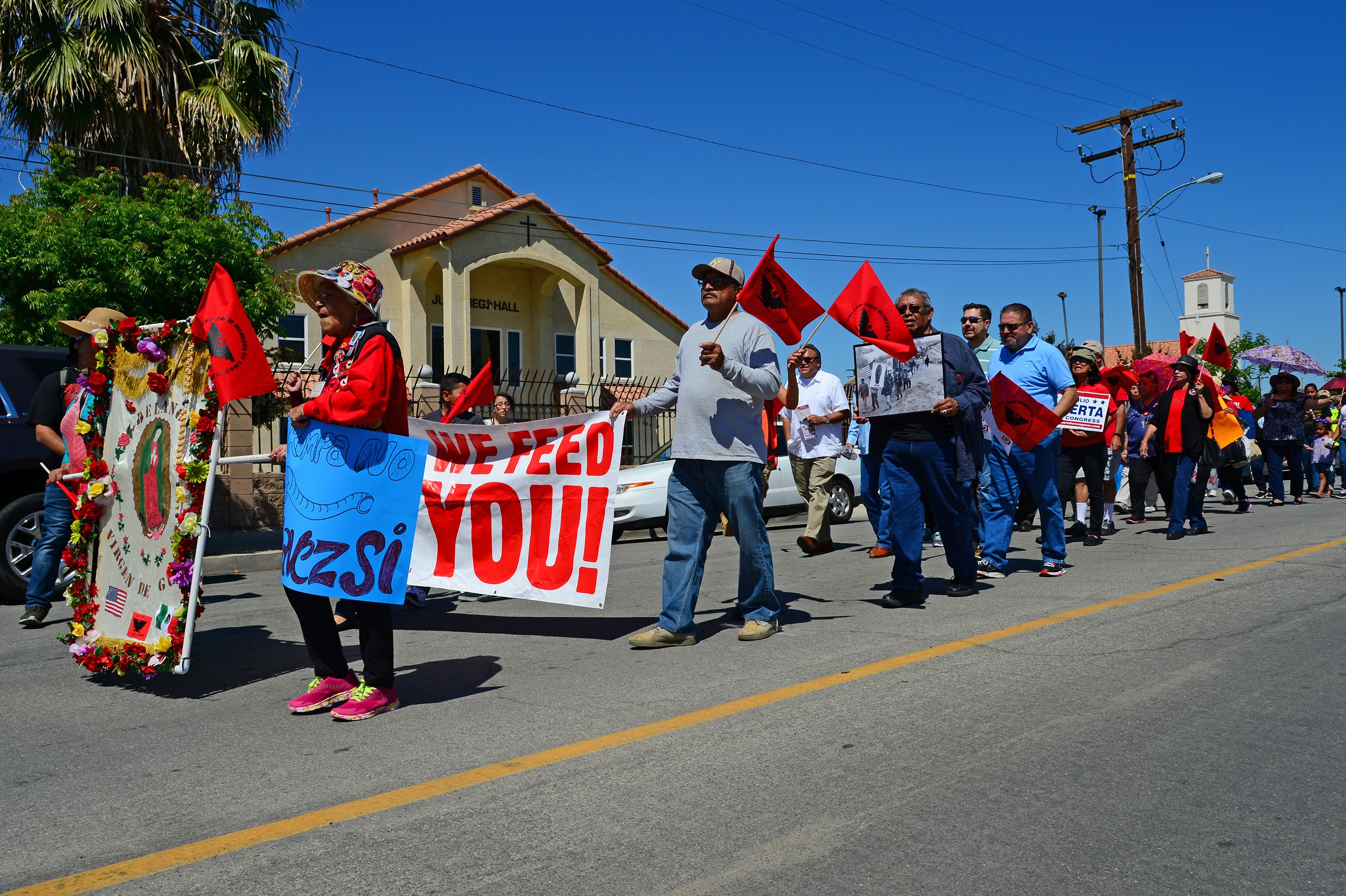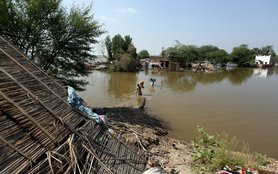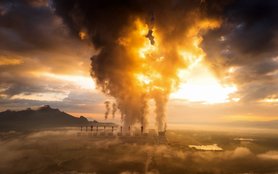While the federal government drags its feet on establishing a heat standard for workers across the country, activists are demanding action at the state level—and winning. Workers, unions, and advocates are rallying together to bring their voices directly to policymakers with one clear message: mandate workplace protections from extreme heat, and save lives.
As the summer of 2022 sees historic spikes and waves of extreme heat, it’s clear that climate change has altered our world and put lives in danger. No one knows this more intimately than outdoor workers, who face unrelenting conditions: sun, heat, drought, humidity, winds, and more. Exposure to high temperatures alone kills dozens of people on the job every year. Each death is a tragedy. And each one is preventable.
The solutions are so simple: water, shade, rest breaks, and acclimatization.
And yet: Employers often refuse to make accommodations. And they don't have to. We still don’t have a federal heat standard in place. (While Biden administration called on the Occupational Safety and Health Administration (OSHA) to create a heat standard, it likely will take years to develop one.)
So how do workers achieve protections in a climate that is already dangerous, and growing more hazardous each year?
They turn to statehouses. So far, three states have passed laws that mandate appropriate protections for outdoor workers: California, Oregon, and Washington. (Minnesota has rules that apply only to indoor workers; Colorado has rules that apply only to farmworkers. For more on state labor policies in 2022, please visit the Oxfam Best States to Work interactive map.)
But to be clear: these legislatures did not compose and pass these laws on their own. In fact, each policy came into law because workers and advocates spent years pushing that rock up a hill.
To learn more about the people who dedicated themselves to the new rules in California, we talked to farmworkers and staff at the United Farm Workers (UFW) about their work to demand protections for outdoor workers. A fight that has not ended, as they continue to demand rights and improvements for millions of farmworkers in the state.
Uniting to raise the voices of workers and families: “Luchar junto para no tener miedo”
In 2005, a scorching three-week heat wave took the lives of at least four farmworkers in central California. One of these was Constantino Cruz, who was laboring in a tomato field in 105 degrees, from 6am to 3pm, when he lost consciousness while sorting through the debris and produce. He was flown to a hospital in Bakersfield, but never recovered from brain damage, and was eventually disconnected from life support.
His uncle, Eucario Cruz, remembers that “there was so much heat that day in the fields. He was working for nine hours, with not enough water, and he was working near a machine that pumped out so much more heat.”
Cruz’s family took their pain and outrage to the UFW, hoping to bring their story about this unnecessary death directly to policymakers. “It’s so important to have these protections, so we don’t have more tragedies,” says Eucario. “It’s so simple: shade, water, rest breaks.” He notes that it’s especially problematic for workers who are paid by piece, rather than by hour, as they feel the need to keep going as fast as they can, no matter the temperature.
The brother of Constantino, Emilio Cruz Hernandez, says his family wanted to know: What can we do to make things better? They joined the efforts to go to the state house in Sacramento. “People are afraid to speak out, but we worked with the UFW, we traveled to Sacramento and told them what happened.”

Erika Oropeza Navarrete, 3rd Vice President of the UFW, was deeply engaged in the outreach to legislators, noting how important it was to have workers talk about the reality in the fields.
“We had trucks full of farmworkers making the trip to Sacramento, we did more than 30 actions. When workers told their stories, the lawmakers heard us. While there were different responses, there were often tears… It’s so important for them to hear from workers directly, without it, they don’t have the essence of what is happening, they don’t feel the loss and the pain.”
After months of this effort, California passed the groundbreaking Heat Illness Prevention act in 2005 (later updated in 2015, see box for details). Navarrete says that the law has definitely made a difference: workers know to speak up, employers know the mandates.
“Workers know they need water, shade, rest, they recognize the signs of heat exhaustion – and they’re more likely to report violations (to OSHA).”
The UFW is still pushing for farmworkers’ rights and conditions. In August, farmworkers from across the state marched for days to reach Sacramento to advocate for voting rights.
The union’s advocacy agenda includes protections around sexual harassment, pesticides (which are hazardous for workers and can cause deformities in newborns), quality of water from pesticides, and strengthening rights to organize. Navarrete says the law that mandates overtime for farmworkers, which passed in 2016, was “a huge victory for farmworkers, for the first time in history.”
Emilio agrees that “Things have changed. Before, there was no shade, no water, no bathroom. If you wanted to wash up, the boss would bother you. Now it’s better – they may bother you, but it’s not the same. When people get together, we can fight.”
________________________________________________________
TAKE ACTION:
State level: Reach out to lawmakers to urge them to pass and implement state-level heat standards.
Federal level: Tell your Members of Congress to support the Asunción Valdivia Heat Illness and Fatality Prevention Act of 2022 (H.R. 2193).



